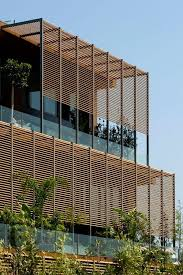When it comes to energy-efficient building design, terms like solar shading and brise soleil come up a lot, but what’s the difference between them? Read on to find out.
Solar Shading
Solar shading encompasses various techniques and devices designed to block or reduce sunlight entering a building, as the name suggests. The main aim of solar shading is to reduce the need for air conditioning and make your home more comfortable by minimising heat gain during hot seasons.
Solar shading can be internal, which means things like blinds, curtains and shades inside the building, for example – but heat can still get through. External shading is more effective at blocking heat before it enters, and can be things like overhangs, louvres, and shutters.

Brise Soleil
Brise soleil from providers like https://alusystems.uk/brise-soleil-solar-shading/ is a French term meaning “sun breaker,” and it refers specifically to architectural elements that block direct sunlight. Unlike general solar shading, brise soleil is a fixed or permanent structure, usually built directly into the building itself. This means it can provide consistent shading, especially for buildings with large glass surfaces.

Key characteristics include:
Design Integration: Brise soleil is often a prominent design feature, contributing to the building’s aesthetic appeal while serving a functional purpose. In other words, unlike solar shading which can look ‘tacked on’ and out of place, brise soleil looks like it’s meant to be there, and that can make a massive positive difference.
Fixed Positioning: Unlike adjustable external shading devices, brise soleil structures are fixed and their design is based on the building’s orientation and where the sun is, ensuring effective shading throughout the year.
Key Differences
While both strategies aim to control solar gain, the main differences lie in their flexibility and design integration. In the end, both solar shading and brise soleil play vital roles in enhancing energy efficiency and comfort in buildings, and choosing the ideal solution for you is going to depend on a few different factors. It’s always wise to speak to experts to get all your options before you take the plunge.
